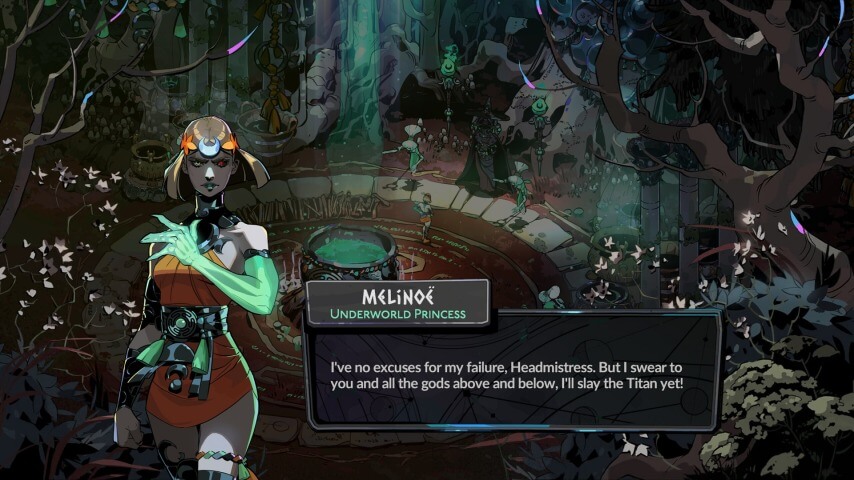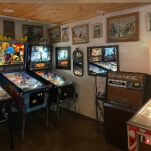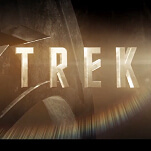I’ve been thinking a lot about repetition in video games lately, spurred on by three recent titles that come at it from very different directions. There’s Sony’s gorgeously dull Ghost Of Yōtei, which is repetitive despite itself, taking big gobs of very familiar gameplay action and story beats and failing to assemble them into something new. There’s the just-released Final Fantasy Tactics remake, The Ivalice Chronicles, which is literally a nearly 30-year-old video game, brought back to glorious (if occasionally grindy) life. And then there’s Hades II, which finally released into its “No, we swear it’s actually done now” 1.0 form last week.
I wrote quite a bit about Supergiant Games’ mythological sequel last year, when it first released in an already extremely polished Early Access form. In the weeks since getting a Switch 2 copy of the game’s full release, I’ve found myself easily sinking back down into its chthonic rhythms—including its approach to the grind. From a top-down view, Hades II is undeniably repetitive, in multiple ways. It very much starts from the base template of the original Hades, with a structure that alternates quick-moving runs of action gaming with charming story sequences that slowly flesh out its cast of Underworld denizens. And, like many games working in the roguelike framework, it sees players send dethroned princess Melinoë through the same basic set of monster-filled ringers over-and-over again, slowly building up progress in terms both practical and mental. And it all kicks incredible ass.
Partly, this has been a reminder to me that repetition is not, in and of itself, bad. (I say, casually watching as as my “Lifetime hours of The Binding Of Isaac played” count creeps up into the multiple thousands.) The trick with repetition is that you have to be pretty damn confident that whatever you’re asking your players to do again and again is fun or rewarding enough, on its own merits, to support the repeat trips. In the case of Hades II, it’s undeniable: Nobody’s doing top-down action quite like Supergiant, which cut its teeth on brilliant games like Bastion and Transistor before hitting “What if the fighting was incredible and sexy gods wanted to flirt with you?” paydirt with Hades. The sequel is careful to load itself up with huge amounts of variety to get out ahead of some Sisyphean critiques: Different weapons, different skill loadouts, different difficulty modifiers, and more, all paired smartly to systems that incentivize you to switch amidst the bounty regularly. (And not just for some dangled reward, but because you can trust that these designers are pretty sure a decent chunk of players will have a good time with this latest unlikely combination of attacks, powers, and deviously tweaked bosses they’ve whipped up.) But it also builds all that variety on the spine of a combat system that feels great in the hands no matter how deep into the game’s (pretty aggressive) difficulty curve you’ve pushed into.
“Feel” is always a tricky thing to verbalize in action games, but core to Hades II‘s appeal is how fleet Melinoë is, without ever sacrificing power. Like many roguelike games, Hades II wants you avoiding damage even more than it wants you dealing it out, giving our heroine a quick-moving dash that you’ll be using constantly, alongside a Cast move (the one “true” addition to Hades‘ original combat model) that creates a circle that locks down enemies that move into it. Between the two of them, almost any basic attack is avoidable—which is why the game gets so confident with throwing more and more “un-basic” attack patterns at the player the further they get. At the same time, it holds to the old maxim about the best offense being the best defense: A rock band made of vicious sirens can’t kill you nearly as quickly if you’re able to put their drummer out of commission with a lightning blitz of attacks, godly Boons, and super moves in the first 10 seconds of the bout. It feels good to be powerful in Hades II, and the game makes finding ways to break it natural, intuitive, and, varied. You might gravitate to a particular Olympian god’s set of power-ups, but the randomization of the game’s rewards means you’re constantly finding new ways to eke out enough power to bring satisfying war to the Titan who’s imprisoned your family.
On that topic of narrative, meanwhile, Hades II is just as clear on how important craft can be in terms of making the familiar be an asset, not a detriment. The game’s basic is story is not, by any measure, an original one: Melinoë is the daughter of Hades and Persephone (and sister to original game protagonist Zagreus), whose happy domestic life was ripped away from her as a baby by the reappearance of her vile grandfather Chronos, the Titan Of Time. She has since been raised by the (largely benevolent) forces of cosmic night to break Time’s hold on her father’s kingdom, securing revenge in the process. Across dozens of runs down into the occupied Underworld, she makes friends and enemies, builds confidence in herself and her mission, and begins to understand her place in a wider mythological world. It’s all familiar, and it could be rote—if the writers, artists, and voice actors at Supergiant let it be.
Instead, the game has, if anything, been infused with even more charm than the original. (Even if part of me misses how personal, even mildly petty, Zag’s basic quest to get out from under his dad’s thumb in the first game was.) Melinoë—who’s kind of like Lisa Simpson, if she was a staff-toting witch possessed of incredible killing power—is a winning character and performance both, serving as a foil to the various extreme personalities you meet along your runs. At the same time, those side figures are all so well-observed that I find myself frequently checking in on them, not just for the mechanical benefit they might impart, but because I want to see another one of the massive number of conversations that each character has, doled out game-by-game as Melinoë’s quest continues. (I will express a particular fondness for Eris, personification of Strife, who manages to blend an elemental disposition for chaos with basic baby-of-the-bunch syndrome in a way that’s both as clever and funny as it is infuriating.)
The end result of all this craft is a game that is unquestionably repetitive, and all the better for it. Hades II was big when it was originally released, unfinished; it’s absolutely massive now, with two different routes for players to pursue, each with different level structures, bosses to learn, and battles to wage. (To say nothing of mythical oddballs to meet.) By its very nature, it’s the kind of game that’s going to make you do stuff over and over again in order to see it all. But it’s through dedication, hard work, and talent that it makes you want to put in work that hardly feels like work at all.







































